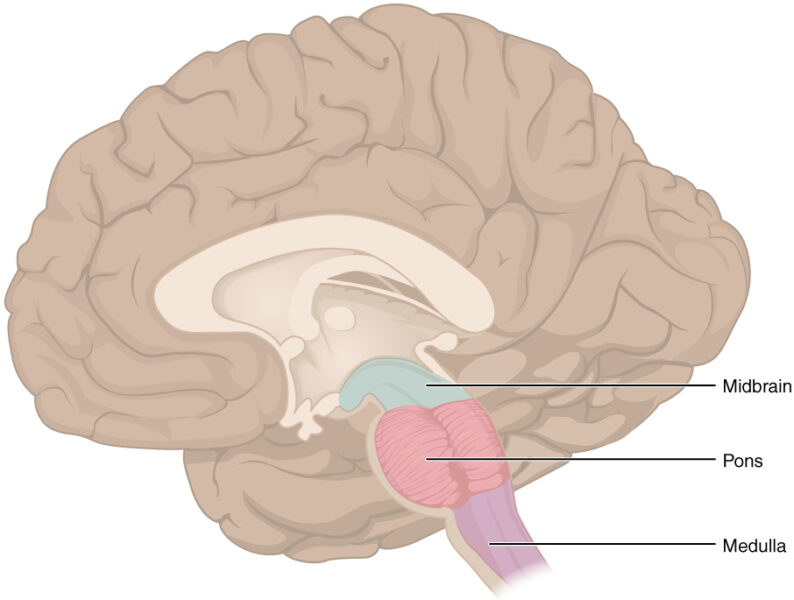Introduction
Often referred to as the medulla, the medulla oblongata is an elongated part of the neural tissue making up the brainstem. This structure is anterior to the cerebellum and forms a part of the brain stem connecting the spinal cord. It is in continuation with the spinal cord.
The medulla relays information from the spinal cord all the way to the brain and comprises a ventral part and a dorsal tegmentum. The ventral portion is inclusive of the olives and the pyramids.
Brief History
For the most part of the 18th century, the medulla was simply thought to be an expansion of the spinal cord with no distinguishable function of its own. Later this changed when Legallois discovered that he was able to take out the cerebellum and cortex of rabbits, and it still continued to breathe.
However, with the removal of a particular part of the medulla, there was an immediate cease in respiration. He found what he considered to be the “respiratory centre” in the medulla. In due course, the medulla oblongata was deemed to be the centre for vital activities to survive.
With time, “vital functions” and their association with the medulla got clearer. It came to be known as a critical part of the regulation of both respiratory and cardiovascular activities.
Role of the medulla in cardiovascular mechanism
Its role involves the control of blood pressure and heart rate to make sure that enough supply of blood continues to circulate all through the body. In order to achieve this, the nucleus in the medulla referred to as the nucleus of the solitary tract takes in information in blood vessels from stretch receptors. Such receptors are referred to as baroreceptors which detect when walls of blood vessels contract and expand and hence can identify alterations in the blood pressure.
When baroreceptors give signals suggesting that there is a fluctuation in the blood pressure from an expected range, then there is an enactment of the reflexive mechanisms to revert them to equilibrium.
For instance, when blood pressure drops and is detected by the baroreceptors, it passes this signal to the nucleus of the solitary tract which then triggers neurons in the ventrolateral medulla. This, in turn, regulates the sympathetic nervous system innervation of nerve cells which raises the blood pressure and the heart rate.
Facts about Medulla
- The source of supply of blood are arteries
- External surfaces – the external surface comprises a fold of Pia mater which goes beyond the length of the medulla
- The complete medial portion of the medulla oblongata is supplied with blood by the Anterior spinal artery
- The commissural fibres define the base of the medulla oblongata, which crosses over from the ipsilateral part of the spinal cord to the contralateral part of the brain stem. Underneath this is the spinal cord
A stroke and such blood vessel blockage can injure the pyramidal tract, hypoglossal nucleus and medial lemniscus which could lead to a syndrome referred to as the medial medullary syndrome. This was a brief overview of the medulla oblongata. Consider reading through the types of lymphocytes concept next. Alternatively, subscribe to BYJU’S YouTube Channel for related content.





